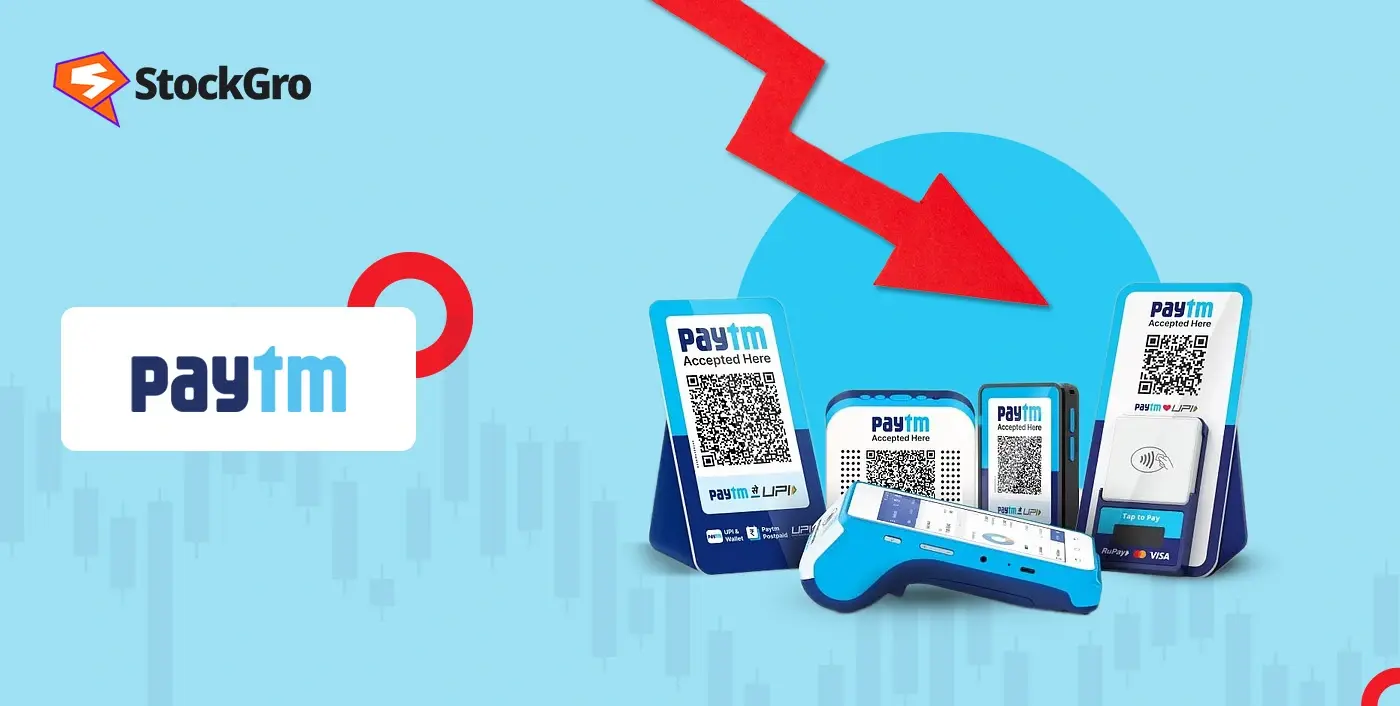
In recent market news, Paytm’s parent company, One 97 Communications, experienced a significant dip in its share price, falling by 10% to ₹864.40 after the Finance Ministry’s firm rejection of a report claiming the government was considering reintroducing Merchant Discount Rate (MDR) on UPI transactions. This sharp decline has sparked investor concern, given the weight of such announcements on the fintech giant’s stock performance.
What’s behind the Paytm stock crash?
The market was rattled after reports surfaced suggesting that the Indian government might reintroduce MDR charges on UPI transactions above ₹3,000, a move that could potentially boost the revenue streams of payment service providers, including Paytm. However, the Finance Ministry promptly quashed these claims, declaring them “false, baseless, and misleading.”
The announcement sent shockwaves through the market, with Paytm’s share price hitting a low of ₹864.40 in early trading on June 12, 2025. It marks a 10% plunge, the steepest drop since February 2024, reflecting investor jitters. The clarification from the Finance Ministry also highlighted that no MDR charges would be applied to UPI transactions, thus easing concerns about the impact of such fees on the digital payments landscape.
Also read: India Markets slide as Global Tensions Rattle Investors
Breaking down the situation: What is MDR and why does it matter?
The Merchant Discount Rate (MDR) is a fee that merchants pay to banks or payment service providers for processing digital payments. This includes transactions made through debit and credit cards, as well as UPI payments. In an effort to boost digital transactions, the government scrapped MDR charges on UPI payments and RuPay debit cards in 2020, a move intended to support the shift toward cashless transactions.
However, reports earlier in the year raised concerns that this policy might change. The Payments Council of India (PCI), which represents non-bank payment firms, had urged the government to reconsider its stance on MDR. The council suggested implementing a nominal MDR of 0.3% for large UPI transactions, citing financial sustainability issues. They argued that the absence of MDR has placed undue pressure on the digital payments ecosystem, with operational costs far outpacing the ₹1,500 crore government incentive to keep the system running.
Despite these calls for MDR reinstatement, the Finance Ministry’s clarification left little room for speculation, affirming that UPI would remain free of any merchant fees for now.
You may also like: Liquor Stocks fall after Maharashtra Excise Duty Hike
The impact of the finance ministry’s clarification
UBS, a global brokerage firm, weighed in on the matter, noting that the Finance Ministry’s denial of MDR speculation would negatively affect Paytm’s net payment margins. According to UBS, the absence of MDR—along with the lack of any government incentives for the digital payment ecosystem—could result in more than a 10% downside risk to Paytm’s adjusted EBITDA (Earnings Before Interest, Taxes, Depreciation, and Amortization) estimates for FY26 and FY27. As a result, the firm maintained a “Neutral” rating on Paytm, setting a target price of ₹1000 for its stock.
Despite the turbulence, Paytm has seen significant success in other areas. The company’s Q4 FY25 results showed it maintaining a strong market presence, although investor sentiment continues to be volatile amidst policy clarifications like these.
You may also read: Oswal Pumps IPO Details, Dates, Price Band & Lot Size
Key metrics to track
Here’s a quick snapshot of the latest developments related to Paytm’s stock performance and its market environment:
| Metric | Value |
| Paytm Share Price (as of June 12) | ₹864.40 |
| Single-Day Price Drop | 10% |
| Market Capitalisation Drop | ₹4,606 crore |
| Shares Traded | 370,000 shares |
| MDR on UPI | No MDR (denied) |
| Expected EBITDA Downside (FY26-27) | 10% |
| Target Price (UBS) | ₹1000 |
These figures reflect the current market conditions surrounding Paytm, especially as the company faces mounting challenges due to shifting policy frameworks.
Looking ahead: Will Paytm bounce back?
The fintech industry, and Paytm specifically, remains in the spotlight. As India’s digital payment ecosystem continues to grow, UPI remains a dominant player. With transaction volumes surging and UPI accounting for 80% of retail transactions in FY24, the future of payment solutions in India appears promising. However, market sentiment remains heavily tied to government policies and their impact on the financial sustainability of the digital payment providers.
Despite the recent downturn, Paytm’s resilience in the market is something to watch, especially as the company navigates these uncertain waters. As UPI continues to expand, Paytm’s competitive position will depend on how it adapts to both government policies and the evolving landscape of digital payments in India.
Also read: List of Top Breweries & Distilleries Stocks in India 2025
Conclusion
The recent clarification by the Finance Ministry has certainly shaken investor confidence, but Paytm’s long-term outlook remains largely unaffected by this single event. As the government continues to support UPI and its zero-MDR policy, Paytm will need to focus on its core operations and look for other avenues to bolster its revenue streams. For now, though, Paytm’s stock may continue to face volatility as investors digest the implications of the latest developments.

